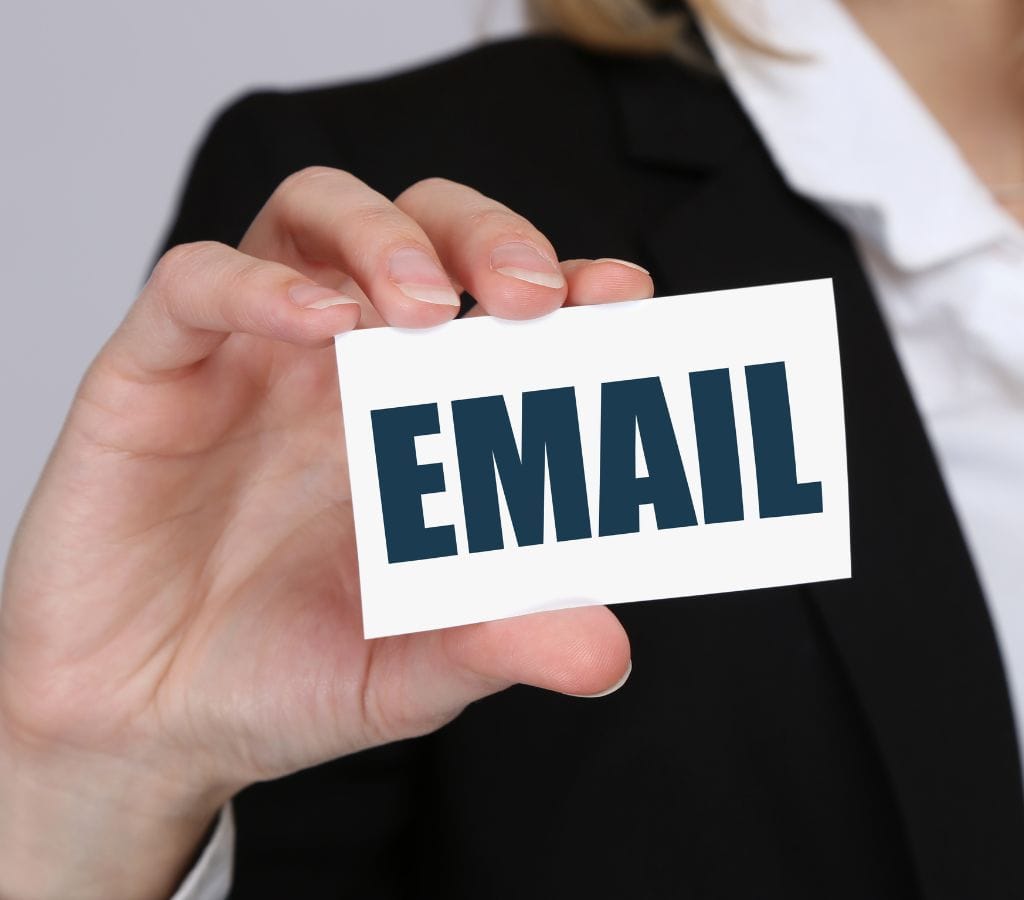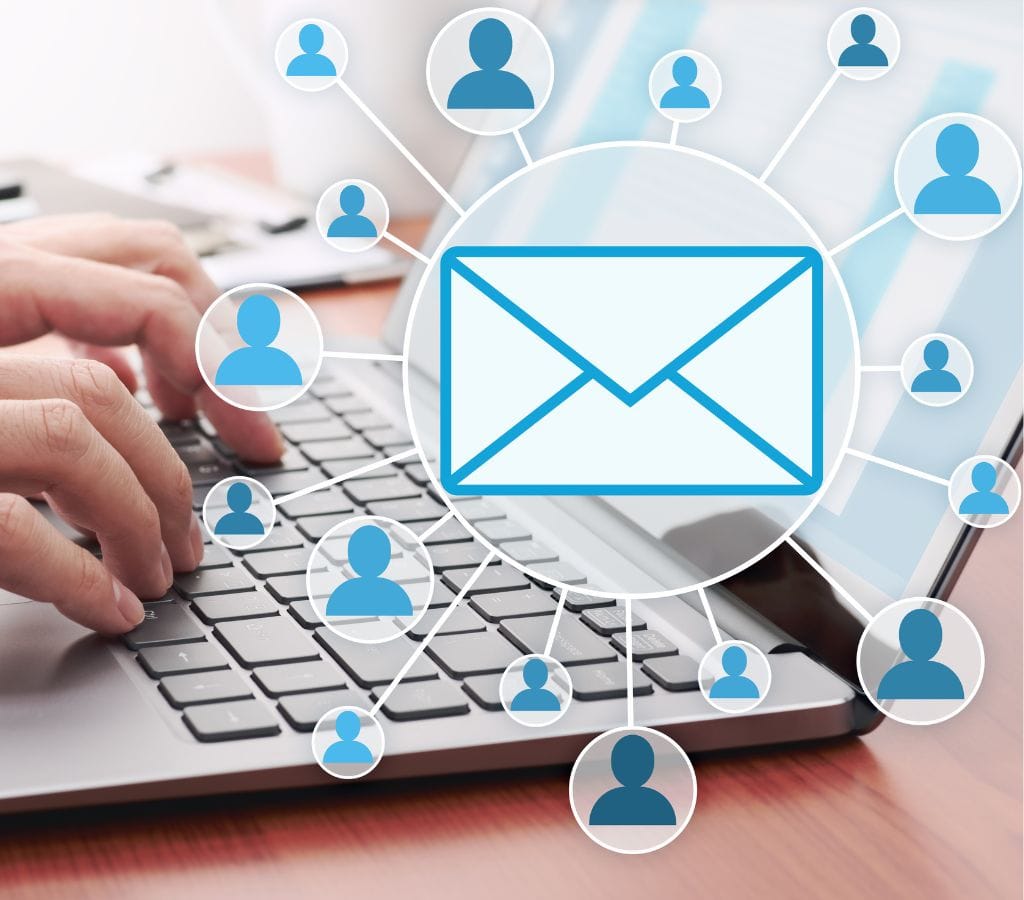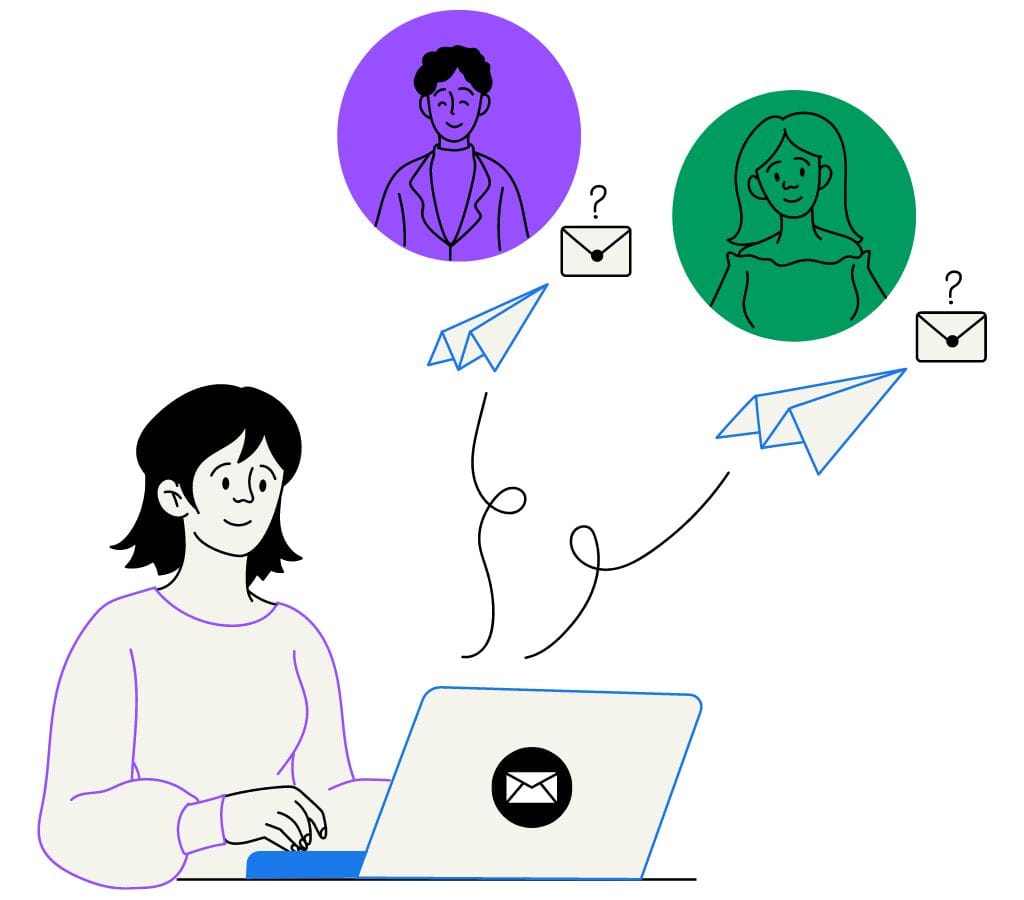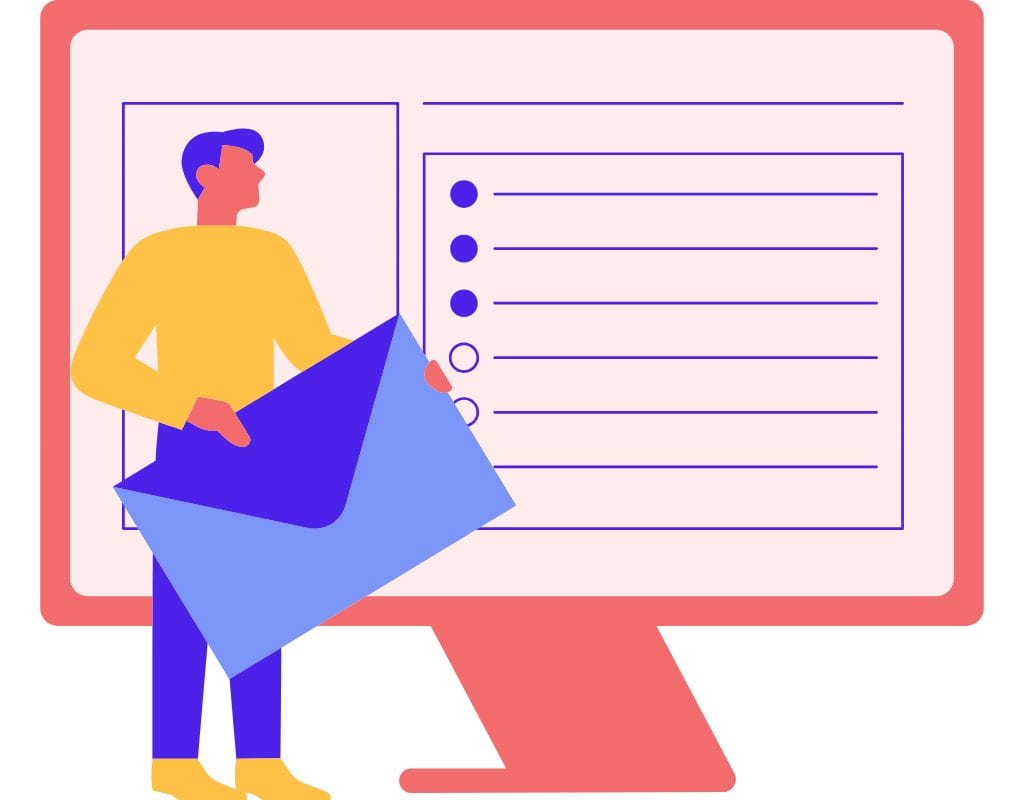Email is a great way to do it when you need to talk to someone for personal or professional life. Many people use the phrase "via email" when they write. But some people misunderstand or mistake its meaning and use. This blog post will define "via email" and discuss how it has changed as a way to communicate, how people currently use it in writing, and the importance of it. So, learn more about how people talk to each other and what "via email" means by reading this post.
What Does 'Via Email' Mean?
People often use "via email" when sending or receiving a message or news update through email. Explicitly stating it lets you know what platform the communication will be used.
When someone talks about, sends, or shares information "via email," they mean that it is done online through email. People can communicate by sending documents and messages, sharing files, and doing business.
Knowing what "via email" means helps senders and recipients communicate clearly and understand the means of communication. How and when to use "via email" in writing, along with some examples to help you understand what it means, are what we'll talk about next.

The History of Email Communication
Email has come a long way and has changed how we share information and talk to each other since it was first made. It is helpful to know the history of "via email" and how it has changed over time in order to understand what it means and how to use it fully.
When Email Was First Used
In the 1960s, computer networking pioneers the invention of electronic mail or Email. People made it so they could send electronic texts to each other between computers. The United States Advanced Research Projects Agency (ARPA) built the ARPANET, one of the first email sites.
Ray Tomlinson made modern email possible by putting a "@" sign between the user name and the domain name in 1971. It was now possible for computers to talk to each other. This invention laid the groundwork for very many people to use email as a way to communicate.
How Email Has Evolved and Used In Daily Life
People and businesses used email a lot more in the 1980s and 1990s as it became more accessible. Email protocols like POP (Post Office Protocol) and SMTP (Simple Mail Transfer Protocol) made it possible for many more people to use email, and email apps became easy to use.
Email became a big part of our lives when the Internet and the World Wide Web came out in the 1990s. No matter where they were or what computer system they were on, anyone with an email address could communicate online. As a result, a lot more people use email for work and personal reasons.
How is Email Today
In this day and age, email is still one of the best ways to reach people all over the world. It has become a useful tool for many types of people, companies, groups, and institutions. Email has changed over the years to include multimedia files, attachments, and added features like encryption and spam blockers.
To many people, email is still a safe and formal way to communicate, even though social media and instant messaging have made other ways of talking more common. People use it to write work letters, school messages, personal talks, and other things.
We can better understand what it means to send information "via email" if we know how email came to be. Next, let's take a closer look at when and why people use "via email" in different scenarios so that you can fully grasp its meaning.

What It Means to Write "Via Email"
We need to learn more about "via email" in order to understand what it means and how to use it fully. There are a few different ways to use "via email," and this part will look at what it means in writing and what it means in various scenarios.
Literal Definition of 'Via Email'
When you use "via" with "email," it means that you are sending a message or piece of information or exchanging files through email. The word "via" originates from Latin and signifies "through" or "by way of." The phrase "via email" indicates that the sender uses email to communicate.
How to Read and Use "Via Email" in Communication
In messages, people often use "via email" to discuss how they sent the message. People often put this in the header or at the start of an email message to let others know they are sending it online. This word lets senders and receivers know the platform, ensuring unambiguous communication.
"via email" can be used in many situations, such as:
- Professional Communication: In business, people often use "via email" to indicate that important messages such as letters, reports, or questions are being sent through email. Email is a businesslike way to write to bosses, coworkers, or clients, but this is even more important when you talk to them.
- Personal Communication: People can use "via email" to say that they are sending or receiving content through email instead of other channels like text messaging or social media when talking personally or sharing personal data.
- Sharing Document: People often send things like papers, presentations, and pictures as attachments in emails. It clarifies that they are sending the files as attachments to emails and not through other file-sharing means.
- Online Services and Transactions: Online service confirmation notes, order receipts, and account alerts often use "via email". A message informs people that the sender will send the information to the provided email address.
Examples of 'Via Email' in Sentences
To help you understand, here are some lines that use "via email":
"Please submit your project proposal via email to the designated address by the end of the day."
"I will email you the contract details for your review and signature."
"We will share the meeting agenda and supporting documents with all participants via email before the scheduled date."
"Congratulations! We have confirmed your order. We will send you a confirmation email with the details shortly."
In these examples, the phrase "via email" clarifies that the conversation occurs electronically through email. The following will explain email's position in professional, personal, and online services and transactions.

Why Email Is Important in the Modern World
Email is a big part of our lives in this fast-paced, connected world. Email is important for business, personal ties, and online deals and services. So, we will talk about how important email communications are.
Professional Communication and Email Etiquette
People at work mostly talk to each other through email these days. Friends, clients, and business partners can quickly and easily share information with each other. Why email is so important in business, among other things, is because:
- Formal and Professional: Email lets you send formal and professional messages that make sure information is given in an organized and appropriate manner.
- Documentation and Record-Keeping: Emails record important conversations, decisions, and deals. They write down talks so that they can be used again if needed.
- Global Reach: Email lets you talk to people in different places and time zones. It helps people worldwide talk to each other and makes it easy for businesses to work together.
- Time Management: People can save time by reading and responding to emails, so they don't have to talk to each other immediately. You can better plan your time and set job priorities with this freedom.
You should follow the right rules to communicate professionally and effectively through email. Being polite and using the right greetings and salutations is important. You should also speak clearly, not use too much jargon or acronyms, and answer emails quickly.
Email in Personal Communication
Email isn't just for work; it's also a great way to talk to friends and family. That will help you understand why email is important for talking to people:
- Long-Distance Communication: Email is a quick and cheap way to stay in touch with loved ones, family, and friends who live far away. People can send longer, more thorough texts than with other methods.
- Privacy and Security: People can send private or critical emails immediately without putting them on social media or other public platforms, which gives them some privacy and security.
- Sharing Memories and Joyful Times: Email lets people send pictures, videos, and other files to their friends and family so they can share important documents, memories, and happy times.
- Organization and Archiving: Like business emails, email makes it easy to find and get important information when needed. It keeps personal texts in order and stores them.
How Email is Used for Online Transactions
Email is a key part of doing business and surfing the web. Email is handy when you buy things online, create a new account, or get updates. Here are some ways it's useful:
- Account Verification: Many online services need users to prove their identity through email to keep their accounts safe. This process makes users safer and keeps people from getting in without permission.
- Transactional Communication: Email sends buyers receipts, order confirmations, shipping alerts, and other transaction-related information. It gives people a safe, trackable way to talk to each other during the exchange.
- Support for Customers: Customers can email companies or service providers to get help, ask questions, or get problems fixed.
- Subscription and Updates: Email is used to send newsletters, news, and special deals to subscribers to keep them informed about new products, services, or changes in the business world.
Email is very important for online deals and services. It keeps you safer and also makes it easier to talk to people and learn about important changes and news.

Possible Misunderstandings and Miscommunications in Email
Email has a lot of good points, but it can also lead to misunderstandings and mistakes. It's hard to understand what someone is saying and why without their tone of voice and body expressions. We'll talk about some issues that can arise when people email each other, how to avoid confusion, and why it's important to be clear and to the point.
Issues with Tone and Context
One of the worst things about email conversation is how hard it is to get the tone and message right. It's easy to get the wrong idea about the meant tone without visual or auditory clues. A message that was meant to be neutral or helpful might seem rude or angry to someone.
Emails without background information can also make things hard to understand. If you haven't talked to the person, figuring out what they wrote in a message is harder. This could lead to confusion and miscommunication.
How to Avoid Misunderstanding
To prevent misunderstandings when you send emails, keep these things in mind:
- Use Short and Clear Language: Be clear and straight when you talk to people. Don't say things that aren't clear or that could be taken in multiple ways.
- Consider the Recipient's Perspective: Thinking about how others might understand what you say is called "putting yourself in their shoes." Remember that people of different races and cultures may be sensitive.
- Tone and Politeness: Think about your message's tone and ensure it fits with what you want to say. Add "please" and "thank you" to your sentences to show that you care and are nice.
- Emphasize Key Points: If there is important information or a request, ensure people don't miss them or get them mixed up.
- Clarify Expectations: Don't be vague about what you want when you give tasks or ask for information. Be clear about what you want to happen and any due dates or standards.
- Proofread and Review: Read your email one last time before you send it. Look over your message for typos, grammar mistakes, or other things that might make it unclear.
The Role of Clear and Concise Language
You should use clear, short language in emails so people don't get confused or misunderstand you. It might help to say things this way:
- Break Down Complicated Information: If you need to share information that is hard to understand, break it up into smaller pieces. Put your thoughts in numbered or bullet point lists to help the other person understand them better.
- Clear and Direct: It's important to be clear and direct about your goal or dream. Do not add too many things that are not important or will take away from the main point.
- Use Formatting Appropriately: Use headings, bold text, or underlines to draw attention to important text after arranging it. But don't use too much style; it can make the email look crowded or hard to read.
- Proofread and Edit: Check your email for mistakes in writing and grammar, as well as words that don't make sense. Being clear about this will help your point get across.
These tips and stressing clear and concise language can help you avoid misunderstandings and improve your email communication.
In conclusion, knowing what "via email" means and how to use it is very important. You can now use email for both work and pleasure. It has changed a lot over the years. Let's learn about the misunderstandings that can happen in email and take steps to avoid them. This will help us get our points across clearly and build strong relationships through email. When you email someone, you should use clear, short language and pay attention to tone and context. Use email's strengths to make "via email" an important and useful way to meet in the modern world.

